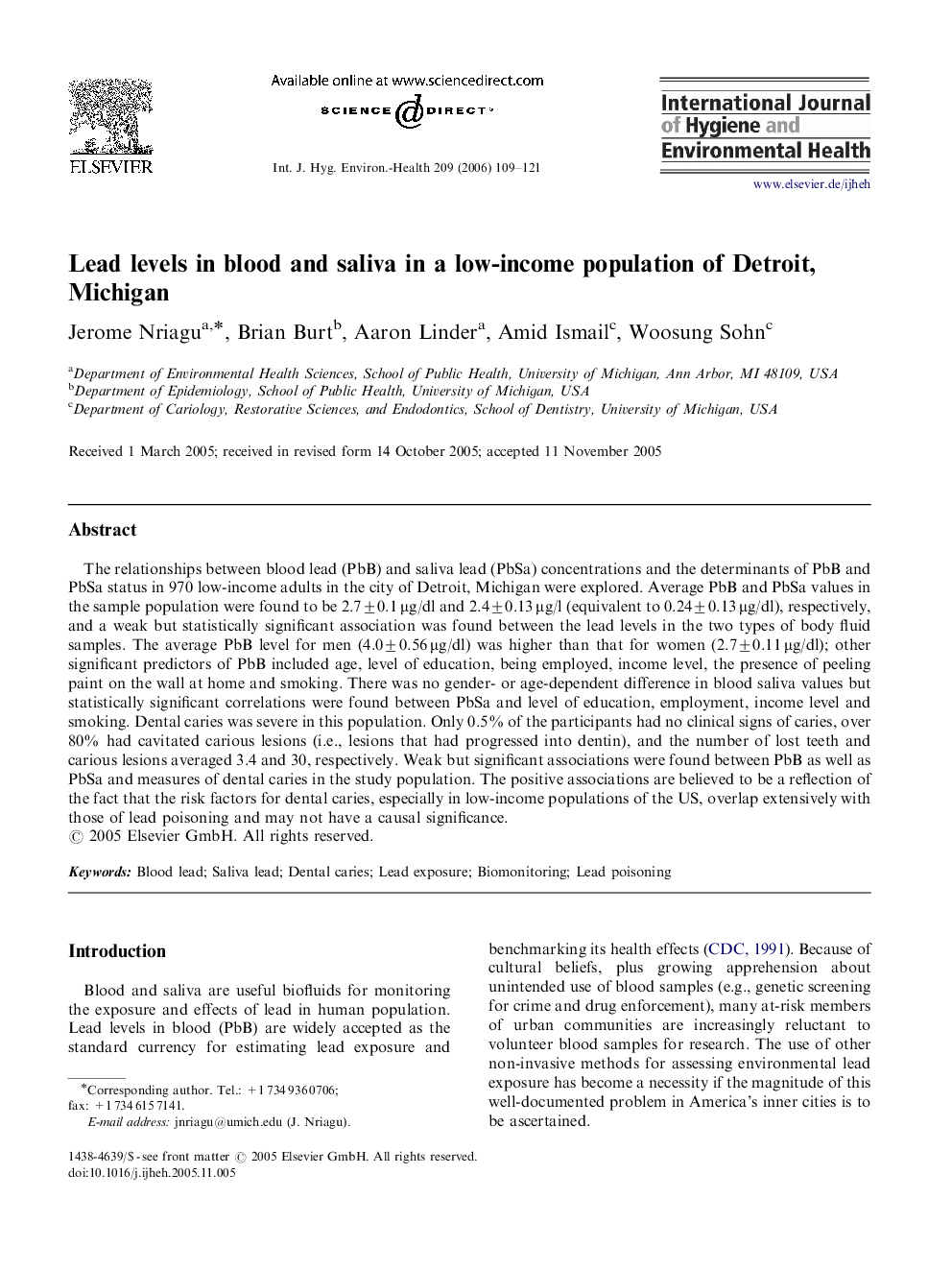| Article ID | Journal | Published Year | Pages | File Type |
|---|---|---|---|---|
| 2589057 | International Journal of Hygiene and Environmental Health | 2006 | 13 Pages |
The relationships between blood lead (PbB) and saliva lead (PbSa) concentrations and the determinants of PbB and PbSa status in 970 low-income adults in the city of Detroit, Michigan were explored. Average PbB and PbSa values in the sample population were found to be 2.7±0.1 μg/dl and 2.4±0.13 μg/l (equivalent to 0.24±0.13 μg/dl), respectively, and a weak but statistically significant association was found between the lead levels in the two types of body fluid samples. The average PbB level for men (4.0±0.56 μg/dl) was higher than that for women (2.7±0.11 μg/dl); other significant predictors of PbB included age, level of education, being employed, income level, the presence of peeling paint on the wall at home and smoking. There was no gender- or age-dependent difference in blood saliva values but statistically significant correlations were found between PbSa and level of education, employment, income level and smoking. Dental caries was severe in this population. Only 0.5% of the participants had no clinical signs of caries, over 80% had cavitated carious lesions (i.e., lesions that had progressed into dentin), and the number of lost teeth and carious lesions averaged 3.4 and 30, respectively. Weak but significant associations were found between PbB as well as PbSa and measures of dental caries in the study population. The positive associations are believed to be a reflection of the fact that the risk factors for dental caries, especially in low-income populations of the US, overlap extensively with those of lead poisoning and may not have a causal significance.
